The Trak Racer TR8 in a nutshell
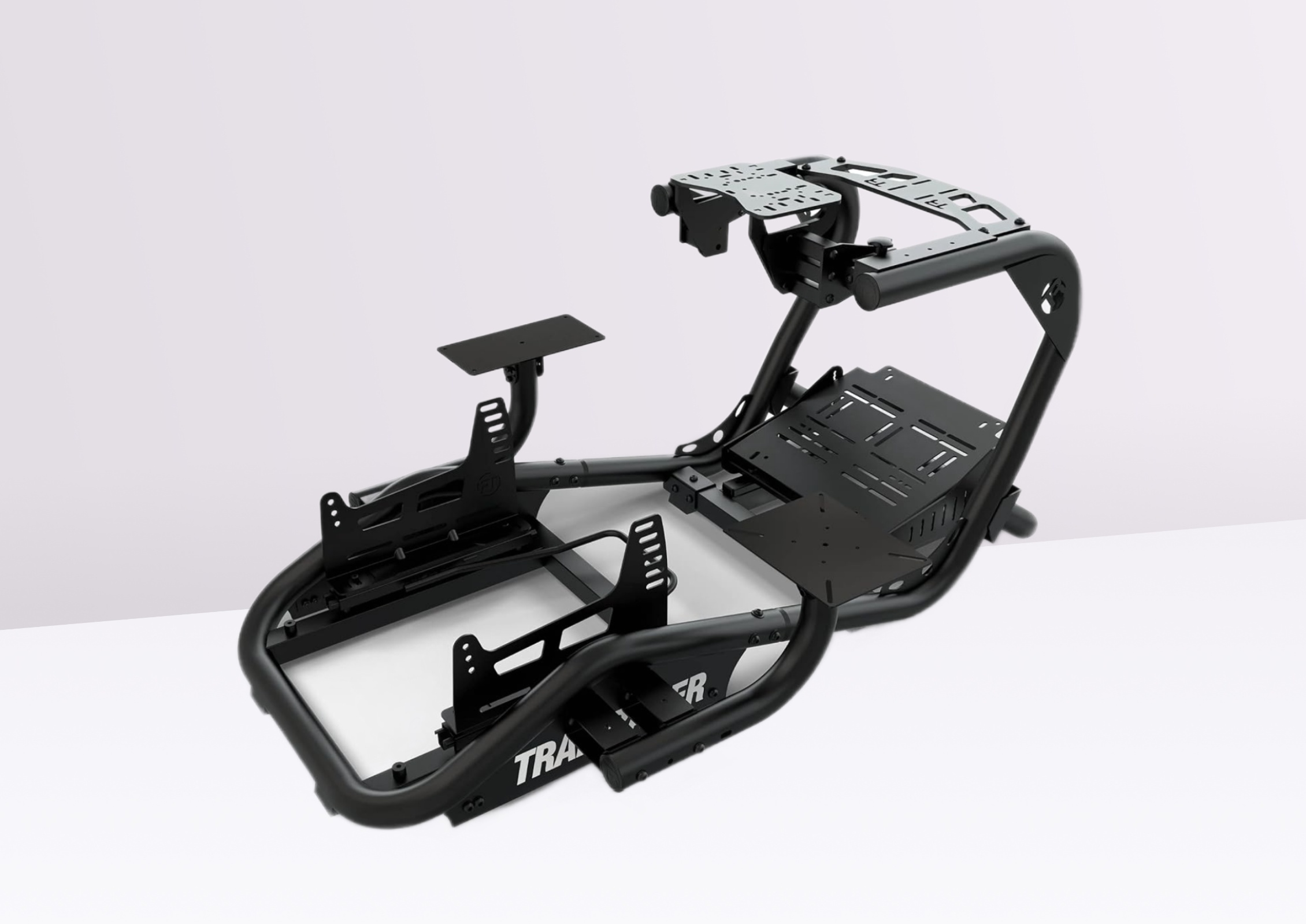
Advantages & Disadvantages
✅ Very solid, customizable tubular chassis
✅ Extensive parts and accessories catalog
✅ Compatible with many brands of sim-racing peripherals
❌ Sold virtually naked, with no accessories
❌ Can be very expensive with full option
ㅤ
The market for cockpits and chassis in sim-racing, and also in flight simulation because it’s practically the same equipment, is quite competitive these days, due to the multitude of products available on the market. Numerous brands are fighting for market share, more or less head to head, as sim-racing has become very interesting for both racing and leisure pilots.
Between you and me, competition is a good thing for the consumer, because it allows us to offer products that are not only innovative, but also at lower prices. As far as I’m concerned, it’s a win-win situation for both our sim-racing setups and our bank accounts.
As mentioned above, there are many players in the cockpit segment, including PlayseatNext Level Racing and Trak Racer. Some brands have been on the market for twenty years or so and therefore have excellent experience in their field, while others are only a few years old. For the subject of today’s article, we’re going to look at Trak Racer, which I’d say is a brand in the middle: young enough not to be known by everyone, but very experienced enough to produce excellent chassis. In what follows, I’m going to introduce you to one of its flagship products: the TR8.
Main and technical cockpit features
- Ultra-strong tubular metal frame
- Structure to accommodate numerous Direct Drive bases
- Highly customizable brackets for sim-racing peripherals
- Adjustable pedal bracket
- Gearshift and shifter bracket as standard
- Screws and key included in the package
TR8 design
As far as I’m concerned, the TR8 is a great tubular chassis for sim-racing. In fact, I find this type of cockpit, the tubular ones, to be one of the most beautiful and, above all, one of the most apt to immerse us in the world of motor racing, as they remind us of the interior of racing cars with cage hoops.
The cockpit is sober, with an all-black exterior, dotted here and there with the Trak Racer logo, either in white or cut directly into the metal. The TR8 is magnificent, especially if you have a setup that includes peripherals in a single color: black.
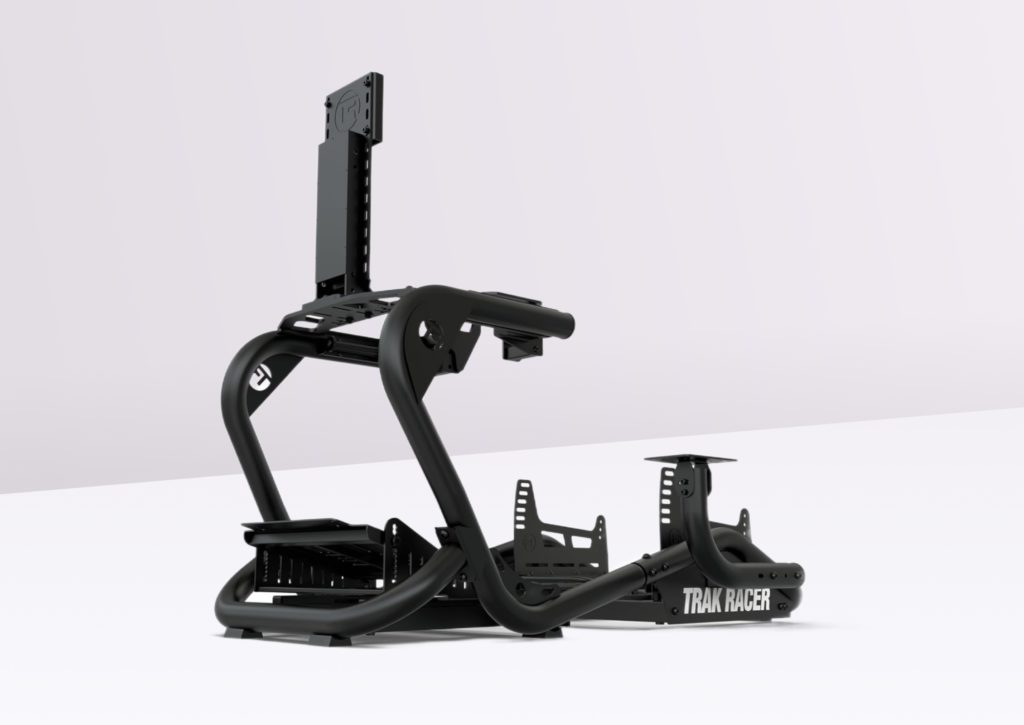
Manufacturing and finishing
Trak Racer didn’t go to too much trouble to build this chassis, using 2″ metal tubes for the entire structure. In addition to its good looks, the TR8 is very sturdy, yet compact at just 60 cm wide (not including theshifter/gear lever side mount).
As for the finish, well, it’s simply top-notch, from the paintwork to the few weld spots on the chassis. Also, once the TR8 is fully assembled, all parts and brackets are perfectly aligned with the tubular structure, indicating that the build quality of this cockpit is simply excellent. I’ve seen some brand-name chassis that don’t fit together very well, due to alignment problems between parts and holes for fasteners. But with the TR8, it’s top quality, nothing to say about that.
Frame assembly
The TR8 assembly operation will take a little time, as the cockpit is delivered entirely in kit form. Assembly itself isn’t all that difficult, and the packaging is superb by the way; not excessive, but sufficient to protect the whole lot.
To fully assemble this cockpit, you should allow around 1 hour, or even more if you have no experience, or if you’re on your own. Even if the operation is relatively easy, you’ll still have a bit of trouble assembling some of the brackets on the chassis, or frame, as you’ll have to do a little gymnastics between holding the part and passing the screws through the holes.
As for the assembly guide, it’s detailed, easy to read and very well illustrated, but it’s digital. So you’ll need a PC, smartphone or tablet nearby to see the steps and assemble the parts.
Using the cockpit
So, the TR8 can be used in a variety of sim-racing competitions: from rally racing to GT, and everything in between. The bucket seat brackets are adjustable, allowing you to easily change your driving position, even if there will be certain limits to the said position (you won’t be able to opt for a 100% F1-style position, for example, but it’s getting close all the same).
You should know that the TR8 comes with just a few brackets(crankset, base plate, shifter and bucket seat slides). So you’ll have to pay for the seat, base mounting brackets, monitor brackets and other accessories from the Trak Racer catalog. It’s a really complete package for all your sim-racing needs, but it’s going to get very expensive if you buy all the accessories and brackets.
Sensation in play
Once you and your setup are in place on the TR8, you’ll feel that the chassis is very rigid, hardly moving at all, even with a large base. The tubular structure gives it a very high level of solidity and rigidity, which is to be expected given that this chassis is designed to accommodate powerful sim-racing peripherals.
As far as the base support is concerned, it hardly moves at all, and I did my tests with a Fanatec Podium DD1 at its maximum. The support is sturdy and easily absorbs the base’s 20 nm of torque, without transmitting any movement to the TR8’s structure, and that’s what you want in a good cockpit. On the other hand, as soon as you attach a monitor to the TR8 and use a high-torque base, and when it’s set to near-maximum, you’ll notice that the monitor moves, and this is an inherent problem with chassis that have monitor mounts attached directly to their structure, without reinforcements.
As for the crankset, the brochure says it can handle Heusinkveld, but I did notice a little flex on the bottom bracket under heavy braking. It’s not bad, but it’s noticeable, and it’s noticeable all the same.
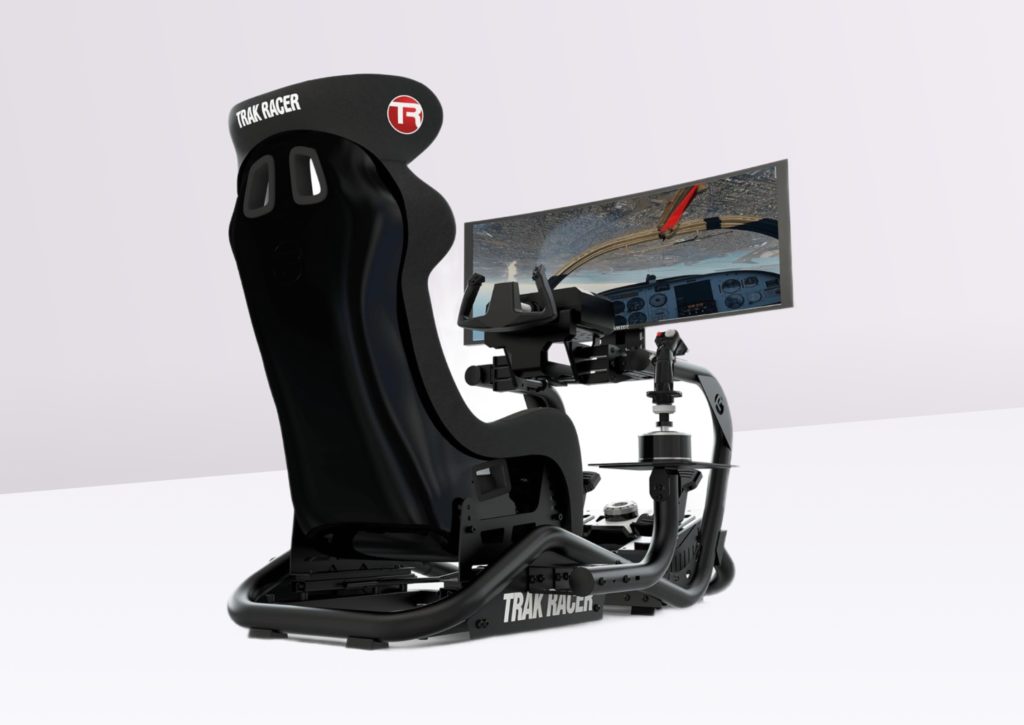
Trak Racer TR8 compatibility
Trak Racer’s TR8 supports virtually all sim-racing peripherals from the big names in the game, from FanatecMoza and Simucube. It’s really complete, whether for bases, pedals or shifters/handbrakes.
A small weak point: on some pedalboards, the plate mounting holes are sometimes not properly aligned, leaving you to do some gymnastics, or outright converting yourself into a MacGyver to fit these peripherals. I’ve mostly noticed this with entry-level pedalboards, like the CSL Pedals. For the rest, i.e. high-end pedalboards, it’s easy to fix, with perfect alignment. That’s the problem with sim-racing: there are so many devices that don’t have the same formats.
Value for money
The bare TR8 costs around €550, depending on where you buy it. That’s still a contained price, but you should know that on this cockpit, everything is paid for, from base mounts to bucket seats and other accessories.
In full option, with the Alpine seat, Fanatec base support and other supports for monitors and peripherals, it could easily cost you 1300 or more. It’s still expensive, I admit, but if you take a standard seat and the base support, the bill will come to just €850, which isn’t too bad considering that the TR8 is an excellent chassis, especially when it comes to rigidity.
My verdict on the TR8 chassis
I really like the TR8 from Trak Racer, as well as the TR8 Pro, which is an improvement on the first model. It’s a good chassis to exploit in various sim-racing events, as well as virtual car competitions.
Its high level of adjustability makes it perfect for just about anyone, and the price is pretty contained if you don’t take all the accessories of course. As far as I’m concerned, I validate this frame and recommend it without hesitation.

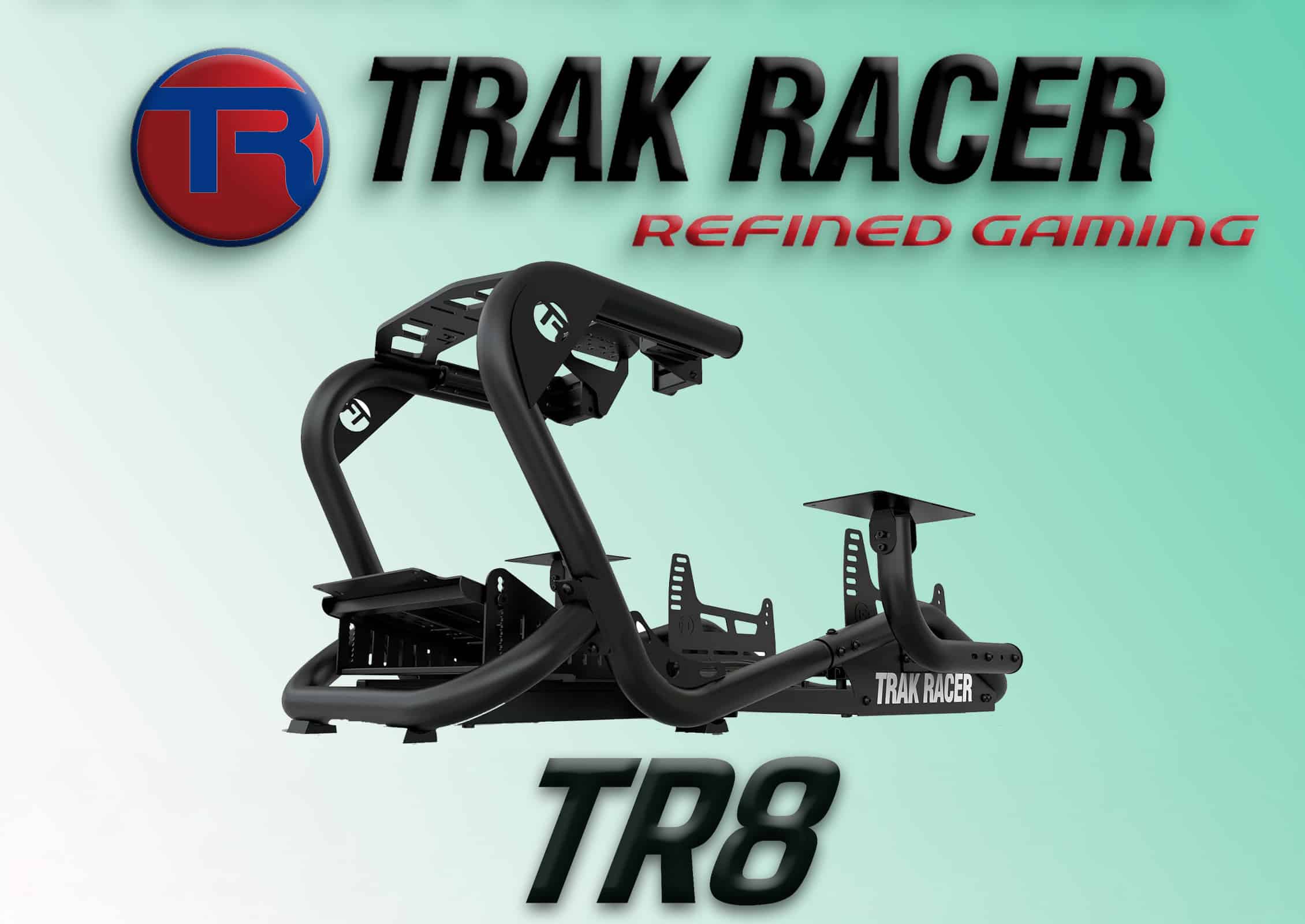
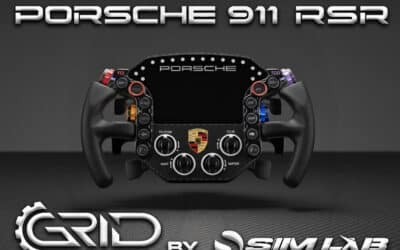

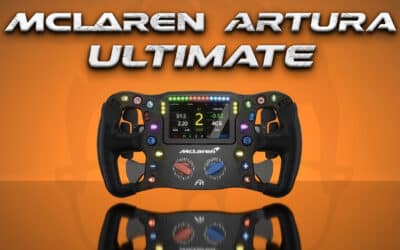
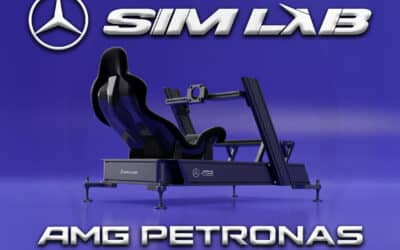
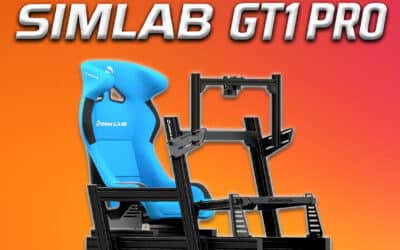
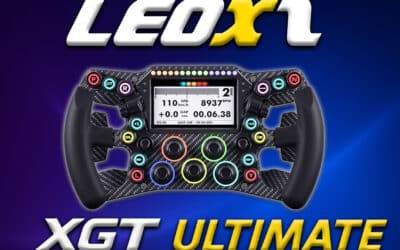
0 Comments